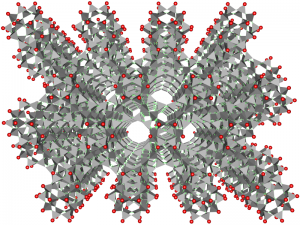I was briefly at UCSB in 2009 and everyone on campus involved with the Material Science Department admired Shuji Nakamura, both for his kindness and likelihood of winning a Nobel Prize for his seminal work in developing the blue LED. While green and red LEDs had been around for some time, without blue there was no hope of replacing many types of lights with these energy efficient solid-state devices. Shuji’s work enabled LED light bulbs, which I absolutely adore, televisions, and other devices in addition to generally advancing our understanding of advanced materials. While I never met the man myself, I’m happy that such an admired researcher took home the Nobel Prize in Physics.
Eric Betzig earned the Nobel Prize in Chemistry for his work in super resolution optical microscopy. He holds a special place in my heart for several reasons. First, as an HHMI Investigator, he was a member of the same tight knit club that counted my graduate school advisor, Kristi Anseth, among its ranks. HHMI is a tremendous organization and I am proud to have done my graduate research in an HHMI lab. The organization has generated a Nobel Prize in each of the last three years and I look forward to many more. Second, he gave a tremendous lecture at the University of Colorado shortly before I defended, so I had the opportunity to learn more about his research in person. And finally, I spent many hours pushing the limits of confocal microscopy in graduate school and I’m happy that innovation in the area is being rewarded.
However, all is not well with the round of Nobel Prizes. In my short-lived time at UCSB, I spent most of my time in the lab of Galen Stucky, who is best known for his pioneering work on mesoporous zeolites. I was excited to read in C&EN that Galen was on the short list for the chemistry Nobel, but I have to admit, despite my appreciation of Eric’s work, that I would have preferred to see Galen on a flight to Sweden. Notwithstanding, congratulations to all the Laureates and I will in anticipation for Galen’s prize next year. In his honor, the structure of a zeolite appears below.
